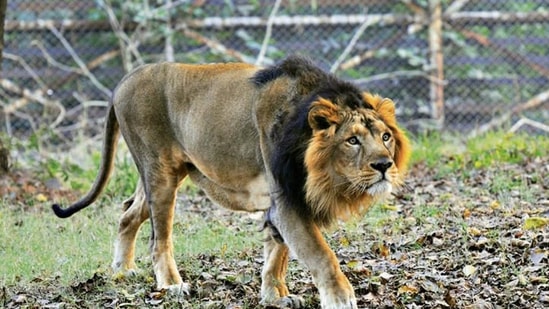 |
| Scientists from NOAA Fisheries Services attempting to disentangle a young North Atlantic right whale. |
A recent study has shown that North Atlantic right whales are now growing smaller in size compared to four decades ago and suggests that commercial fishing is responsible. This research, published in the journal Current Biology, pointed out that a North Atlantic right whale born today would grow to be about one meter shorter than a whale born in 1980. Presently, full-grown whales average 43 to 46 feet. The researchers used high-resolution aerial photographs to record the size and body condition of 129 right whales. North Atlantic right whales usually migrate up and down the East Coast from Canada to Florida. In recent years, more than half the population has been seen off the coast of Cape Cod, Massachusetts where they come into contact with fishing gear. Researchers discovered that entanglement causes long-term harm to the whales even when they do not die. This happens when the whales get caught in the gear and drag it around. During the process, the whales end up spending more energy in fighting to survive, instead of growing or repopulating their decreasing numbers. In addition to contributing to decreased body size, entanglement also causes nursing female right whales to produce smaller offspring. This threatens the repopulation of this right whale species whose numbers are so few. The stunted growth of whales corresponds with a growing rate of entanglements. A study from the New England Aquarium in 2012 indicated that more than 80 percent of right whales have been entangled at least once in their lives and 60 percent have been tangled more than twice. The researchers recognized that entanglements do not explain all of the decreased growth. Other causes might be collisions and noise from ships, climate change, and the changing availability of copepods, the whales' main food source. The researchers are now trying to determine whether other whales and marine mammals are experiencing similar declines in growth.
I strongly believe that a great deal of research needs to be done in order to determine this stunted growth in marine mammals, including North Atlantic right whales. These whales are critically endangered and their population recently diminished from 481 in 2011 to 366 now. Due to their namesake, they have been targeted by commercial whaling for their high fat content ultimately pushing them to the brink of extinction by the early 1890s. Even though whaling is now banned, these whales are threatened by commercial fishing and various other human-induced factors such as climate change. I believe that in order to conduct further research on this issue, preventive measurements need to be carried out to ensure the right whales' safety, along with other whales and marine mammals. This includes better control of crab and lobster fisheries in the East Coast, noise pollution control, and even the testing and implementation of harmless fishing alternatives such as ropeless fishing. I also believe that research needs to be done to determine the source of gear found wrapped around the whales in order to prevent unfair blaming on fishing industries and putting them out of business.


